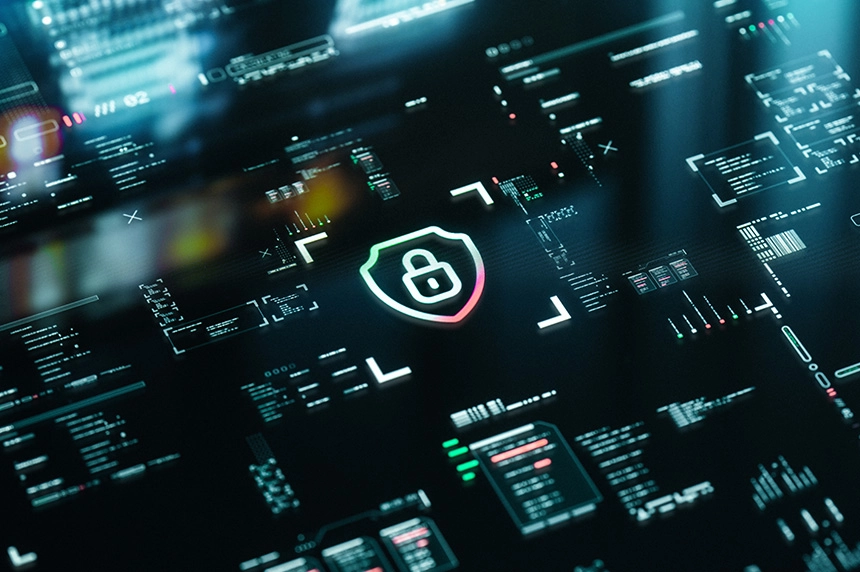Learn the fundamentals of cyber threat intelligence (CTI), understand its vital role in defending against modern cyber threats and explore its key types and methodologies.
A successful cyberattack can have catastrophic consequences on the target organization. To protect against the ever-increasing number of cyberattacks, organizations are leveraging various security solutions, such as intrusion detection systems (IDS), intrusion prevention systems (IPS), security information and event management (SIEM) and firewalls. However, despite all these technologies, cyberattackers still find ways to smuggle in and infiltrate even the most protected computer networks.
Acquiring future insight into potential threats is similar to an army equipped with the required information to understand the enemy's next move. In the context of cybersecurity, cyber threat intelligence (CTI) is a proactive approach to learn about cybercriminal attacks before they happen. This enables security teams to be well-prepared and customize their security defenses accordingly.
In this article, I will define the term CTI, discuss its importance in today's digital age and mention its types and general methodology.
Defining cyber threat intelligence (CTI)
CTI is a systematic, proactive approach to identifying cyber threats, including threat actors behind them, the tactics, techniques and procedures (TTP) involved in cyberattacks and proposing the methods and techniques to mitigate them.
The term "threat intelligence" alone refers to the data collected from various sources to understand potential threats posed to your organization's IT environment and work to deploy the required defenses to mitigate these threats before they happen.
Many still do not separate "threat data" and "threat intelligence." Threat data refers to information about possible cyberattacks, such as ransomware or Advanced Persistent Threat (APT) attacks. The term "threat intelligence" refers to the holistic approach that exploits threat data – among other data types – to inform decision-makers on responding to cyber threats before they strike their organization.
Cyber threat data sources
Threat data can be acquired from different sources, primarily categorized into two groups:
Internal sources include log data from the installed security solutions, such as Firewalls, IDS/IPS and networking devices. Data collected from previous incident responses and vulnerability assessment reports are also considered internal threat data sources.
External sources include threat intelligence feeds from open-source and commercial platforms. Dark web monitoring and information acquired from open-source intelligence (OSINT) sources – such as social media intelligence (SOCMINT), discussion forums and news websites are also considered valuable external sources for CTI.
Some open-source threat intelligence feeds:
- AbuseIPDB – Lists IP addresses that were associated with malicious activities online
- CrowdSec Console – Lists active malicious IP addresses in real-time
- Binary Defense Systems Artillery Threat Intelligence Feed and Banlist Feed
- CI Army List
Discover OSINT tools and techniques for threat intelligence with our guide >
The importance of CTI
The threat landscape is changing rapidly, especially after the release of ChatGPT, which opened the generative AI technology capabilities to the public, including threat actors. This technological advancement has radically changed the cybersecurity field by facilitating the execution of more sophisticated attacks and automating many repetitive tasks associated with cyberattacks. For instance, threat actors leverage AI to generate convincing phishing emails, create malware and conduct social engineering attacks with greater efficiency and scale. CTI is an indispensable tool for organizations to counter these increasingly complex and AI-enhanced attacks.
Here are the key advantages of having a CTI capability:
- Proactive defense: CTI allows organizations to predict potential threats before they reach organization doors, giving security teams enough time to tailor their security defenses accordingly. For example, a bank receives CTI from the darknet about a new banking trojan targeting their customer-facing online application. They quickly update their security measures and maybe patch their software to close any security vulnerability before attacks occur.
- Improved incident response: CTI information can be acquired from internal and external sources. Internal sources, which include past cyber incidents, can significantly help security teams respond more quickly and effectively to new incidents because they know attack patterns and adversary tactics. For example, an organization can get insights from a previous data breach to identify and contain a similar attack quickly.
- Improve risk management: By having a holistic picture of the current threat landscape, CTI information better informs risk assessments and, consequently, improves mitigation strategies. For example, a public utility organization may use CTI information to identify increased risks of state-sponsored attacks.
- Adaptive security: Timely CTI information allows organizations to continuously update their defenses in response to emerging threats and the latest attack techniques used by hackers. For example, a firewall provider will rapidly update its rules based on CTI information about a new widely distributed script causing a DDoS attack.
- Facilitates compliance with rules: CTI can help organizations stay ahead of regulatory requirements by identifying potential compliance risks related to emerging threats. For example, a healthcare provider may use CTI to prepare for new Health Insurance Portability and Accountability Act (HIPAA) requirements by enforcing additional security controls for patient data before the deadline.
- Threat actor profiling: CTI information helps security teams profile threat actors by understanding their motivations, capabilities and tactics, including those leveraging AI. Profiling is done by analyzing attack patterns, malware signatures and intelligence reports and is regularly updated as threat actors evolve. For example, a government public utilities organization (such as electricity and water supply providers) creates profiles of known state-sponsored hacking groups actively attacking similar organizations or sectors to tailor defenses against specific adversaries.
- Threat intelligence sharing: CTI facilitates information sharing within industries and across sectors, boosting organizations' overall cybersecurity resilience. This collaborative approach enables faster response to emerging threats and more comprehensive defense strategies. For example, banks working in a specific city share CTI about a new phishing campaign, such as details on attack vectors and indicators of compromise. This allows them to quickly implement defensive measures, such as updating email filters and alerting employees.
- Enhanced threat detection: As threats become more sophisticated after the wide accessibility of AI tools, CTI can also leverage AI technologies to identify complex attack patterns and anomalies more effectively. This includes using machine learning (ML) algorithms to analyze vast amounts of data in real time and detecting indicators of compromise that might surpass traditional security measures. For example, an e-commerce website might use AI-powered CTI to identify and block sophisticated bot attacks that mimic human behavior.
Threat intelligence types
Threat intelligence is commonly categorized into three types:
Strategic intelligence
Strategic intelligence provides a high-level overview of an organization's cyber threat landscape. It offers a broad perspective on potential risks and long-term trends for a non-technical audience, such as top management and key organizational stakeholders. Most strategic intelligence content is non-technical and typically presented through comprehensive reports and executive briefings.
An example of strategic intelligence is an annual cybersecurity forecast report for a financial institution working in multiple countries. This report might highlight emerging global threats, such as the rising trend of state-sponsored attacks targeting the organization and particular industry or the potential impact of new technologies like 5G on the threat landscape.
Tactical intelligence
Tactical intelligence is the frontline defense of CTI and is for a highly technical audience. It is concerned with stopping immediate attacks by identifying the indicators of compromise (IoCs), such as:
- Malicious IP addresses
- Domain names involved in malicious activities
- Malware hashes
- Unusual network traffic
- High authentication failures
- Increase in database reads – For example, in the case of an SQL injection attack
To speed up the process, tactical CTI mainly depends on machine-to-machine integration. This involves automated solutions exchanging and analyzing IoC data in real time. For example, IDS systems can ingest and act upon threat intelligence feeds, enhancing their ability to detect and respond to threats.
Operational intelligence
In operational intelligence, CTI focuses on revealing and understanding threat actors' tactics, techniques and procedures (TTPs). This enables organizations to tailor their security defenses to counter specific threats. For example, operational CTI might reveal that a specific threat actor uses a new malware variant to exploit a software vulnerability to install ransomware. Backed with this knowledge, an organization can quickly patch the vulnerability and update its malware detection systems to recognize and stop the malware.
Threat intelligence process
Cybersecurity professionals use different terms to describe the CTI process, such as methodology and lifecycle. However, regardless of its name, the CTI process can be grouped into six distinct phases:
- Direction – Identify the main goal or objective of the CTI program
- Collection – Gather data from different sources to support CTI objectives. Examples of sources include organization security solutions logs and data collected from OSINT sources.
- Processing – In this phase, the gathered data is turned into something an organization can use. For example, data collected from OSINT sources may need to be cross-referenced with other sources to ensure accuracy.
- Analysis – Gathered information is turned into actional intelligence to support decision-makers. For example, the gathered intelligence may suggest installing additional security solutions to enforce the organization's cyber defenses.
- Dissemination – The conclusion and outcome of the CTI report should delivered to relevant stakeholders to act upon
- Feedback – In this phase, we gather input from interested parties, such as stakeholders, to improve the CTI program
Cyber threat intelligence has become indispensable for organizations navigating the complex IT threat landscape. Organizations can effectively protect their assets by understanding CTI types, processes and its critical role in any cyber defense plan. CTI empowers organizations to predict threats, prioritize defenses and respond more efficiently to incidents.
Remember to stay secure and anonymous while you research. Protect your identity and the intent of your investigation with a purpose-built digital investigations platform like Silo for Research.
Tags Cybersecurity Social media Threat intelligence

